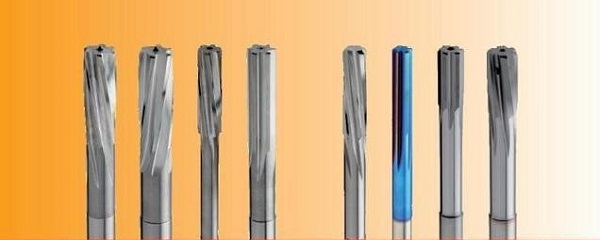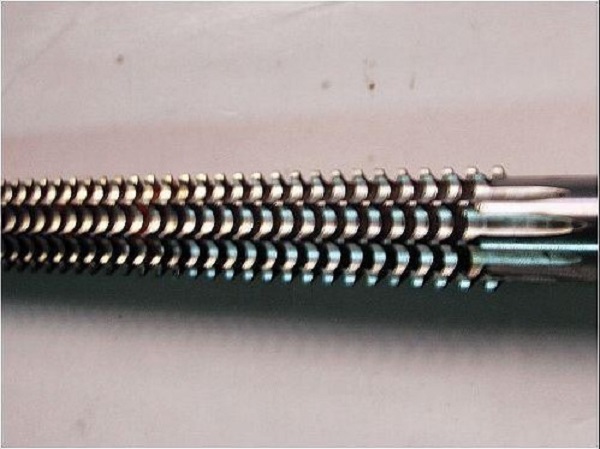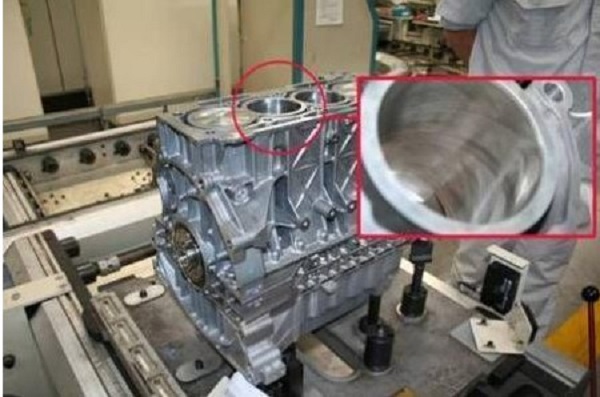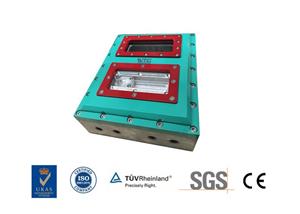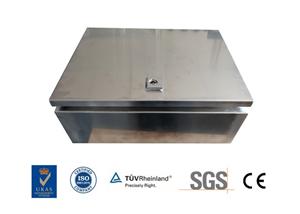Why is it more difficult to machine a hole than a shaft?
There are many types of hole processing methods, such as drilling, reaming, reaming, boring, pulling, honing, etc. The processing methods of these various holes also reflect the difficulty of processing the holes on the side. Different types of holes Holes produced in different batch sizes need to be produced using different production techniques according to the actual situation;
Compared with the machining of the shaft, the conditions for hole machining are much worse, and machining the hole is much more difficult than machining the shaft, because:
(1) The size of the tool used for hole processing is limited by the size of the hole being processed, the rigidity is poor, and bending deformation and vibration are easy to occur;
(2) When machining a hole with a fixed-size tool, the size of the hole processing often depends directly on the corresponding size of the tool. The manufacturing error and wear of the tool will directly affect the machining accuracy of the hole;
(3) When machining holes, the cutting area is inside the workpiece, chip removal and heat dissipation conditions are poor, and machining accuracy and surface quality are not easy to control.
Limiting factors for machining holes such as holes, reaming, reaming, boring, pulling, honing
1.Drilling
Drilling is the most commonly used technique for hole processing. Commonly used drilling knives include: twist drills, center drills, deep hole drills, etc. The most commonly used are twist drills, whose diameter specifications are Φ0.1-80mm. Due to structural limitations, the drill's bending stiffness and torsional stiffness are low, coupled with poor centering, and the drilling accuracy is low, generally only IT13 ~ IT11; there are two ways of drilling: one is Drill rotation; the other is workpiece rotation. The errors produced by the above two drilling methods are not the same. In the drilling method where the drill rotates, when the drill is deflected due to the asymmetry of the cutting edge and the insufficient rigidity of the drill, the centerline of the machined hole will deflect or It is not straight, but the hole diameter is basically the same. In the drilling mode where the workpiece rotates, the opposite is true. The deviation of the drill bit will cause the hole diameter to change, while the hole centerline is still straight. Drilling is mainly used to process holes with low quality requirements, such as bolt holes, threaded bottom holes, oil holes, etc. For the holes with higher processing accuracy and surface quality, it should be achieved through reaming, reaming, boring or grinding in subsequent processing.
2.Reaming
Reaming is to further process the hole that has been drilled, cast or forged with a reaming drill in order to enlarge the hole diameter and improve the processing quality of the hole. Reaming drills are similar to twist drills, but they have more teeth and no horizontal edges . The precision of reaming is generally IT11 ~ IT10. When drilling a larger diameter hole (D ≥30mm), pre-drilling with a small drill (diameter 0.5 ~ 0.7 times the diameter) is usually used, and then the corresponding size is used. The reamer drill expands the hole, which can improve the processing quality and production efficiency of the hole. In addition to reaming cylindrical holes, various special-shaped reaming drills (also known as countersinks) can be used to process various countersink holes and flat end faces. Countersinks often have guide posts at the front end, which are guided by machined holes.
3.Reaming holes
Reaming is one of the finishing methods of holes, which is widely used in production. For smaller holes, reaming is a more economical and practical processing method than internal grinding and fine boring. The reaming margin has a great impact on the quality of the reaming hole. The margin is too large, the load of the reamer is large, the cutting edge is quickly dulled, it is difficult to obtain a smooth surface, and the dimensional tolerance is not easy to guarantee. The tool marks left in the previous process cannot be removed, and naturally there is no effect to improve the quality of hole processing. Generally, the allowance of coarse hinge is 0.35 ~ 0.15mm, and the fine hinge is 0.15 ~ 0.05mm. Reaming hole dimensional accuracy is generally IT9 to IT7. When reaming the hole, it must be cooled, lubricated and cleaned with a suitable cutting fluid to prevent chipping tumors and clear chips in time. Compared with grinding and boring, reaming has high productivity and easy to ensure the accuracy of the hole; but reaming cannot correct the position error of the axis of the hole, and the position accuracy of the hole should be guaranteed by the previous process. Reaming holes are not suitable for stepped holes and blind holes. For medium-sized and high-precision holes (such as IT7-class precision holes), the drill-expand-hinge process is a typical processing scheme commonly used in production.
4, boring
Boring is a machining method that is enlarged by cutting tools on prefabricated holes. Boring can be performed on a boring machine or a lathe. Compared with boring and drilling-expanding-reaming technology, the hole size is not limited by the size of the tool, and the boring has a strong error correction ability. It can correct the original axis deviation error by multiple passes, and can make The boring hole and positioning surface maintain high position accuracy. Compared with the outer circle of boring, the rigidity and deformation of the tool bar system are poor, and the heat dissipation and chip removal conditions are not good. The thermal deformation of the workpiece and the tool is relatively large. The processing quality and production efficiency of the boring are not as high as the outer circle of the car. .
In summary, it can be seen that boring has a wide processing range, and can process holes of various sizes and different accuracy levels. For holes and hole systems with large diameters, high requirements for size and position accuracy, boring is almost the only processing method. The boring accuracy is IT9 ~ IT7. Boring can be performed on boring machines, lathes, milling machines and other machine tools. It has the advantages of flexibility and flexibility, and is widely used in production. In mass production, in order to improve boring efficiency, boring molds are often used.
5, pull holes
Broaching is a high productivity finishing method, which is performed on a broaching machine with a special broach. During broaching, the broach only performs low-speed linear motion (main motion). The number of teeth of the broach working at the same time should generally be not less than three, otherwise the broach work is not stable, and it is easy to produce ring ripples on the surface of the workpiece. In order to avoid breaking the broach due to excessive broaching force, the number of teeth at the same time should not exceed 6 ~ 8 when the broach is working. There are three different broaching methods for broaching, 1) layered broaching, 2) block broaching, 3) comprehensive broaching; broach is a multi-blade tool that can be completed sequentially in one broaching stroke The roughing, finishing and finishing of the holes have high production efficiency. The precision of broaching is mainly determined by the accuracy of broach. Under normal conditions, the precision of broaching can reach IT9 ~ IT7. When broaching, the workpiece is positioned by the processed hole itself (the leading part of broach is the positioning element of the workpiece). It is not easy to guarantee the mutual position accuracy of the hole and other surfaces; for the processing of the rotating parts with the coaxiality requirements on the inner and outer circular surfaces, the hole is often pulled first, and then the other surface is processed with the hole as the reference. The broach can not only process round holes, but also form holes and spline holes. Broach is a fixed size tool with complex shape and high price, which is not suitable for processing large holes. Pull holes are commonly used in large-scale mass production to process through holes on small and medium parts with a hole diameter of Ф10 ~ 80mm and a hole depth not exceeding 5 times the hole diameter.
6, honing holes
Honing is a method of finishing the hole by using a honing head with a grindstone (whetstone). During honing, the workpiece is fixed, and the honing head is driven by the main shaft of the machine tool to rotate and reciprocate linearly. In order to facilitate the discharge of broken abrasive particles and chips, reduce the cutting temperature, and improve the processing quality, sufficient cutting fluid should be used when honing. In order to achieve uniform processing of the wall of the hole to be processed, the stroke of the sand bar must exceed a certain amount of overtravel at both ends of the hole. Honing can obtain higher dimensional accuracy and shape accuracy, and the machining accuracy is IT7 ~ IT6, but honing can not improve the position accuracy of the hole being processed. Compared to the grinding speed, although the peripheral speed of the honing head is not high (vc = 16 ~ 60m / min), the reciprocating speed is relatively high due to the large contact area between the sand bar and the workpiece (va = 8 ~ 20m / min) So honing still has high productivity. Honing is widely used in the production of engine cylinder bores and precision holes in various hydraulic devices in large-scale mass production. The diameter range is generally 15-500mm or larger, and deep holes with an aspect ratio greater than 10 can be processed. But honing is not suitable for processing holes on non-ferrous metal workpieces with large plasticity, nor can it process holes with key grooves and spline holes.

